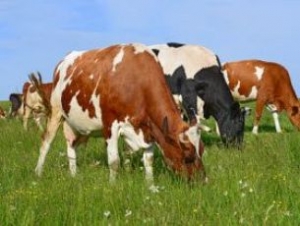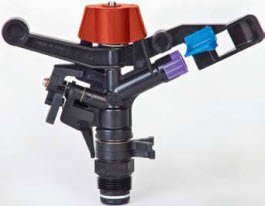Dairy farming

Three breeds currently receiving the most attention from dairy farmers at the moment are the Freisian, Viking Red and the Montbéliard.
But there is no ultimate breeding programme, says Bill Foster, Dairy Breeding Specialist at Genus.
It is a trade-off between loss in yield and gains in health and fertility with the best formula depending on the specific character of the holding and contract requirements.
He maintains that in a high output, more concentrate based system, the Holstein is still number one.
However, for grass and forage based dairies on cheese or yoghurt contracts Mr Foster states that they may not be up to the job.
“It is a case of what farming system you are on. If you are feeding your cows well, looking at achieving high yields then the Holstein is a great breed,” states Mr Foster.

The Montbéliard is now the third most popular choice in dairy crossbreeding programmes.
“However, if you are walking your cows half a mile to grass every day in the hills in Devon or Cornwall or South Wales and you are not pushing for high yields but instead going for lower inputs, some Holsteins struggle to perform and can’t get in calf easily.”
Currently, Freisians are the premier crossing option with Viking Reds and Montbéliard genetics also building in popularity.
“Some people are using three way crossing at the moment – there are lots of different ideas,” adds Mr Foster.
The popularity of Fresians is largely down to it’s black and white characteristics which mean stock value does not depreciate as they allow the Holstein breed code to stay on the farm, explains Mr Foster who has experienced a surge in Friesian popularity in recent years.
“Our Freisian sales have rocketed in the last ten years and today represent 15 per cent of our dairy inseminations which we export to seventeen countries,” says Mr Foster.
Of the three breeds, each one brings something slightly different, explains Susan Stewart, European Dairy Product Manager at Genus.
“The main reason people like Freisians is because you can keep the same breed code and the result can be still registered as pedigree so value of stock is not lost,” says Susan.

Forage conversion and tremendous fertility rates - reasons why 15 per cent of Genus inseminations are Freisian.
“Other attributes are that Fresians have been bred to convert forage and the fertility can be phenomenal. This is why we have seen a lot of people using them. Some farmers want cows of smaller stature but without losing some of the Holstein characteristics.”
The Viking Red, a relatively new breed from northern Europe, is also proving popular this, Susan says, is largely down to ‘component lift’ as well as fertility.
Viking Red is an umbrella term for Swedish Red, Finnish Ayrshire and Danish Red, which is also highly rated for feet and udders.
But despite the merits of these breeds, when you cross a Holstein, Mr Foster warns that milk yields are likely to drop per lactation.
This represents a risk to some farmers but for producers striving for high butterfat content, this is a loss that they can cope with.
“If you use a Freisian on a Holstein, the milk production will definitely be lower. Base difference is about 600 kilograms of milk per lactation. But the fat and protein percentages are higher,” says Mr Foster.
The loss of milk balances against the benefits of greater fertility which, in the case of the Friesian, are the greatest for any breed.
“Cows get in calf quickly, the calf value is better and cow longevity is better. Premiums on bull calves can make good impacts on margins,” says Mr Foster.
*
"If you use a Freisian on a Holstein, the milk production will definitely be lower...but the fat and protein pecentages will be higher"
Bill Foster - Dairy Breeding Specialist Genus
He also includes hybrid vigour as a clear strength of different genetics which can reduce yield shortfall through better disease resistance.
“Off the first cross Friesian you may get a couple of hundred extra kilos of milk over and above parent average through hybrid vigour.”
The Case For Montbéliard
Third in line for inseminations at the moment is the Montbéliard, a French breed originating from the mountainous Jura region offering similar attributes to the Freisian and Viking Red and has witnessed a meteoric rise in recent years.
Richard Pearce, owner of R Breeding, has been selling Montbéliard genetics to farmers for around six years and says the growth in popularity is down to the profitability and general health of the breed.
“As the dairy industry’s profitability becomes more important due to costs rising and the reduction of milk price, people have been looking for alternatives in the herd and the Montbelliard is offering far more profitable cows,” says Mr Pearce who supplies customers on 40-50 cow council holdings up to 600 cow units.
He adds that this improvement in margin comes from lower costs.
Savings can be made through using less semen, having better general health and lower somatic cell counts.
This also helps the veterinary bills, a serious drain on farm resources.
And while some holdings face a hit on yield when changing to Montbelliard crosses, Mr Pearson agrees that productivity can be partly made up through hybrid vigour.
He also stresses that there has been an 800 litre yield increase since 2005 in pure bred Montbeliards.
“I have one customer who has dropped his vet costs to £50 a year from £1000 a year when he had Holsteins,” says Mr Pearce.
“He is getting 3,500 litres off forage as opposed to 1,500 litres from concentrates. This is further cutting costs because cows are producing more milk from grass rather than concentrates.”
Based in the Midlands, Mr Pearce has customers in Leicestershire selling to Long Clawson dairies and in Shropshire where Muller is a big buyer.
This is because the Montbeliard suits processors’ contracts because they are highly rated for their high butterfat and protein percentage.
With so much current emphasis put on ‘adding value’ to dairy products and developing dairy consumption, it would appear the Montbelliard could have a bright future.






















